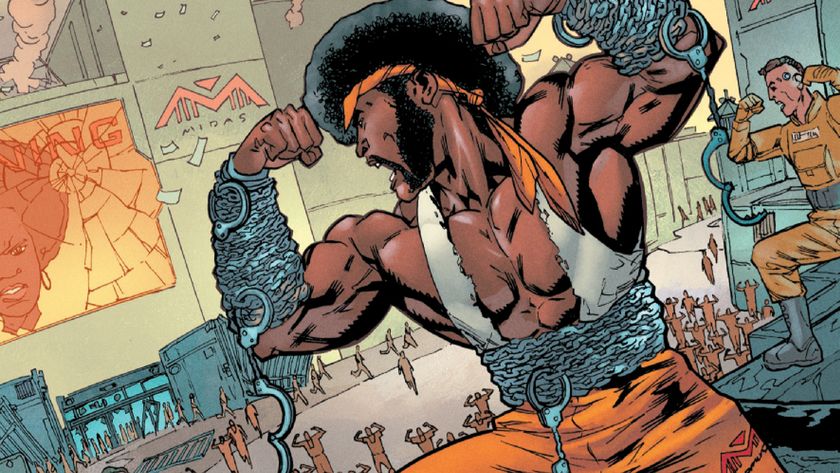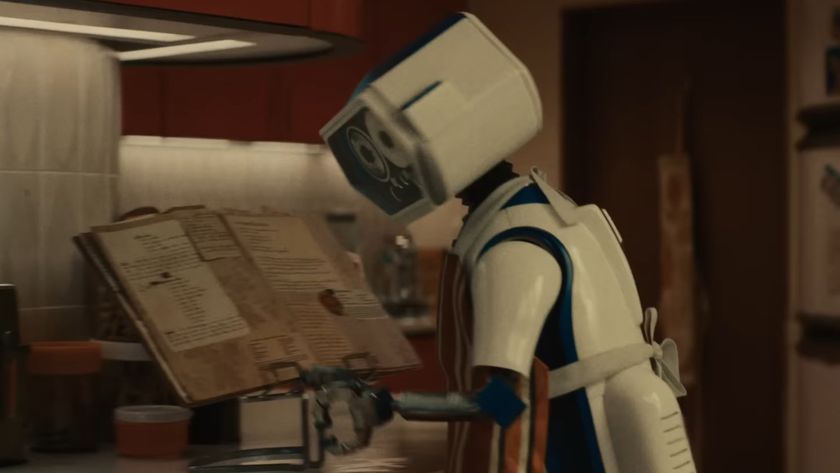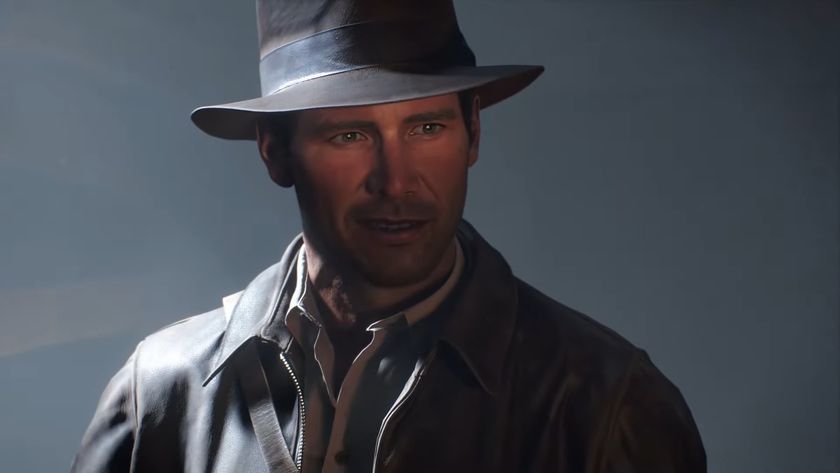Say goodbye to Go Go Power Rangers with writers Sina Grace and Ryan Parrott
As the BOOM! Studios' comic book series nears its end
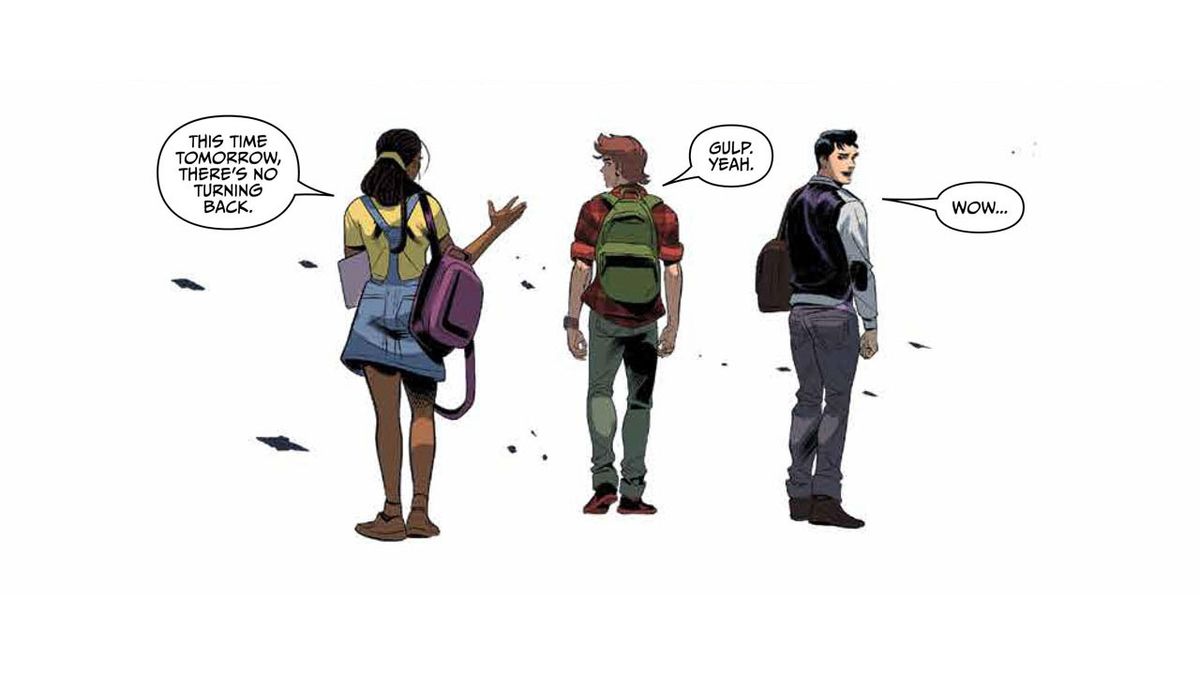
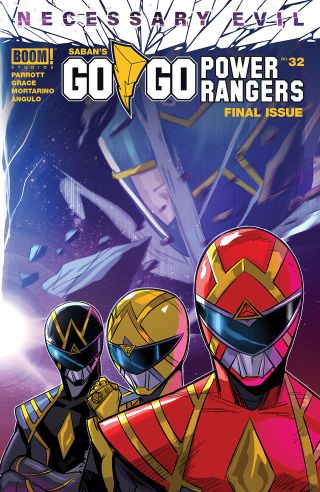
What began as a series to showcase the day-to-day complications that came with balancing life as a Power Ranger and a high school student became a story about saying goodbye.
Hitting comic book stores June 10, The Mighty Morphin Power Rangers companion series’ Go Go Power Rangers wraps up after 32 issues with the last piece of the Omega Rangers’ origin story.
Luckily, Newsarama had the chance to chat with the writers of Go Go Power Rangers, Sina Grace, and Ryan Parrott, before the release of the final installment. We discuss the decision behind ending the title at #32, how this will affect the main flagship title (Mighty Morphin Power Rangers), and took a trip down memory lane to talk about their favorite moments from the run.
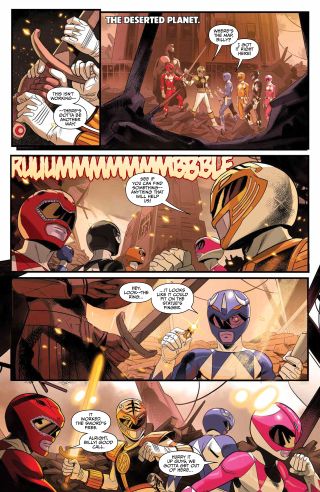
Newsarama: To jump right in, Sina, Ryan, was it your choice or BOOM!’s to end the series?
Sina Grace: As the co-writer brought in to help Ryan on this book that he spent two years building, it was 100% my decision to end the series. I knocked everything off the table during our initial summit meeting and said: "Gang, this is how it’s gonna go."
I’m kidding! As I understand it, the series was doing really well and Ryan had a great yarn to tie things up by sending off Jason, Zack, and Trini at the end. That’s what’s kind of fantastic about where the series is ending: it’s 100% on architect/writer Ryan Parrott’s terms, and he had BOOM!'s and Hasbro’s support to tell this iconic story.
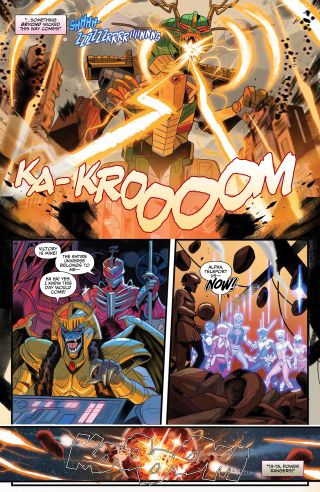
Ryan Parrott: Yes, Go Go was always designed to end at #32 with the completion of the "Necessary Evil" story event. Originally, it was going to end with Forever Rangers #1 and I was simply going to move over to Mighty Morphin Power Rangers, but during the course of breaking the event, we realized that if we kept Go Go around, there was the potential to bridge the events of "Shattered Grid" with "Necessary Evil," while also allowing us to give new context to some of the biggest moments in Power Ranger mythology.
Comic deals, prizes and latest news
Get the best comic news, insights, opinions, analysis and more!
And personally, I liked the idea of being able to work on two books in two different time periods. It's so unique to the medium and part of what makes comics great.
Nrama: Why did you think this was a good place to end?
Grace: If you read through all of Go Go Power Rangers, it becomes clear at this point in the series that all of the characters have reached a point of acceptance: I’m just a kid, but this is my role in the universe… to save it.
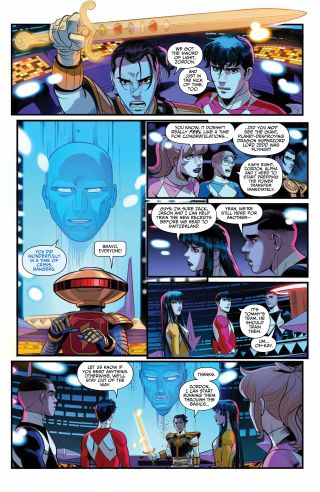
They’ve become pretty enmeshed in their context, and it no longer feels like there’s any "Year One" story left to tell at this point in the saga. It’s only fitting that the moment of passing the baton to Rocky, Adam, and Aisha would be the send-off for Go Go Power Rangers, a book that was truly dedicated to watching the original five rangers get their sea legs.
Parrott: Sina is far more eloquent than I am. I would have just said this is where the timelines merge so there was no more room for story, but that's not very creative.
I always viewed "Necessary Evil" as an event that illustrated the consequences of "Shattered Grid" but ultimately would lead to a new status quo where we could tell infinite stories in the Mighty Morphin Power Ranger universe and maybe free us up from running in lockstep with the television series. And Go Go's purpose was simply to help us get there.
Now that we've reached that point, it seemed like the right time to end the series.
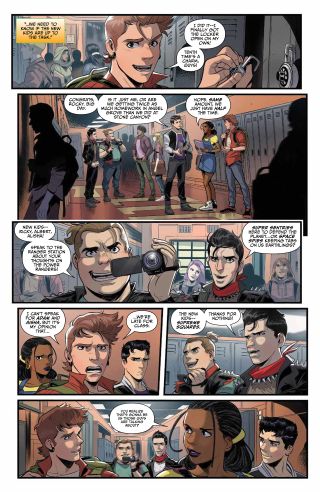
Nrama: What can you tease for fans about the last issue?
Grace: In full circle glory, readers will get to see some "first" moments for the Omega Rangers. I think there are some cute jokes with the Stone Canyon Trio. We snuck in some Easter eggs. Oh, and there is some really stupendous amazing artwork.
Parrott: I think Sina put it best when he called it a passing of the baton. Emotionally, it's an odd ending because it doesn't wrap things up as much as it sorta tears the Power Rangers in two. So, there's a melancholy feeling that I didn't fully understand until we started writing it. But there are some moments I'm very proud of, especially the final few pages where Sina did an amazing job of visually outlining the themes of the run.
Nrama: As co-writers, can you tell us a bit about your writing process together?
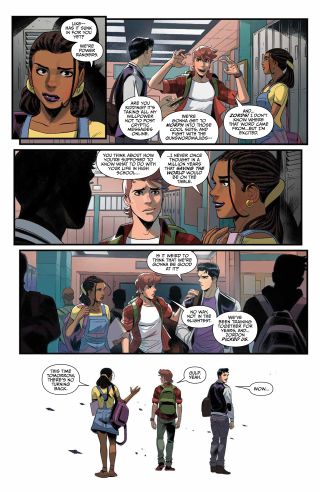
Grace: We tried a few different processes along the way, all starting from the broad strokes Ryan had laid out for the overall arc and then going from there.
Actually, speaking of "strokes," it was most akin to being in the band the Strokes.
Ryan was our lead singer, our Julian Casablancas who had the songs already demoed with our parts pre-arranged.
Dafna Pleban (our editor) was Fabrizio — keeping us on beat and dating celebrities.
So, I guess I was Albert Hammond, Jr., the guitarist who brought a lot of his own stuff to the table but needed to find how it fit in order to make the final product feel like the best version of a Strokes song.
Our stable of fantastic artists are Nick and Nikolai. [Laughs]
But ultimately, that was the fun of co-writing: having these really intense and fun conversations about what was going to be the absolute best story for our readers.
Parrott: Well, I'm not going to beat that analogy. But I have to give Sina all the credit in the world.
It's extremely difficult to come into a project that has already been outlined (and is also only half of a larger story event that is being written concurrently without you) and find a way to seamlessly bring in your own voice and ideas. And Sina did all that in spades. He would usually work up the first draft of every script and then I'd butcher all his great ideas. But throughout that process, we eventually found the best voice for the book and Sina showed me what it means to be a professional.
Nrama: Ryan, Mighty Morphin, and Go Go have been so connected since you took over the Power Rangers’ flagship title. When wrapping up Go Go, did it affect your writing process for Mighty Morphin at all?
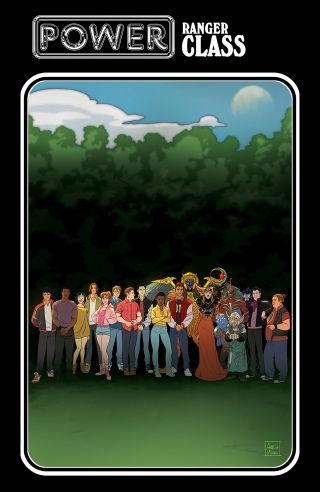
Parrott: The best way I can describe it is... Mighty Morphin was like starting at the middle of a story and writing toward an ending and Go Go was like starting at the beginning and writing toward a middle. But I will admit, and I have to be a little cagey here, but I did find the spark for the next Power Ranger story in the middle of writing Go Go, so I was able to weave it into Mighty Morphin in ways I originally hadn't intended. And I doubt I would have discovered it if I'd written the whole event in order.
Nrama: How will the finale connect to Mighty Morphin Power Rangers?
Parrott: If we did our job correctly, you should be able to go from Saban's Go Go Power Ranger #32 right into Mighty Morphin Power Rangers #40 without skipping a beat. In fact, it might even provide some interesting new context to that issue, even if you've already read it. I said it before but that's what I like about this event. You can read it in release order or go from Go Go into Mighty Morphin Power Rangers and get two completely different experiences.
Nrama: Why did you want to connect the Omega Rangers storylines in both books?
Parrott: I always looked at these two books, not in terms of the Ranger teams, but in terms of character journeys. So, for me, Go Go was about Tommy learning to stop running away and Jason learning that he had to let go and leave. So, bringing in the Omega Rangers at the end of Go Go was just a natural ending to Jason's transformation.
Nrama: If you had a chance to work on another Power Ranger series what would it be?
Grace: I know a good thing when I see it — I would stay firmly in the Go Go world and tell some kind of “lost week” chapter, where it’s 100% just the teen angst of it all.
Ryan had created such a fantastic little ecosystem of high school characters that I kept trying to sneak back into the book. I want to go to there. Or something where Lord Zedd is a little more on his toes about the fight against good and evil. Where we had him, he was peak imperious, trying to clean up Rita’s messes and he felt real good about eviscerating the Rangers.
Actually, now I have an idea that I want to pitch Dafna…
Parrott: Mighty Morphin is really the only series I'm even remotely qualified to write. I suppose a Time Force book would be fun, but ultimately that would just turn into Quantum Leap. And... I just dated myself.
Nrama: Sina, can we expect any more Power Ranger adventures from you?
Grace: Coronavirus stalled out my semi-regular notes to Dafna about diving back into the world! I sure do hope so. I felt really lucky getting to be a part of this journey and telling stories that seemingly all of the fans were excited about.
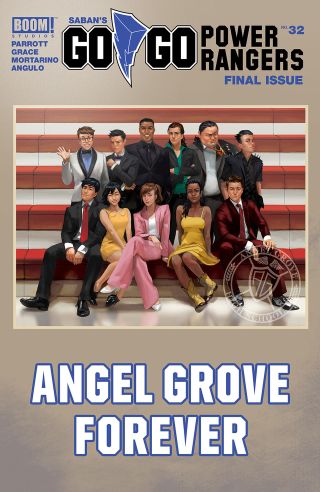
Nrama: Do you have a favorite moment from the series, a storyline you’re most proud of?
Grace: While you see the least amount of "me" in the final product, I’d say I’m most proud of what I learned from working on the "Tower of the White Light" story.
Not only did I get to contribute to this fascinating corner of the Power Rangers mythology- showing Tommy’s side of becoming the White Ranger, but Ryan taught me so much about how to just push things harder as a writer. Additionally, I think it was really swell to write something to our artist Francesco and see him just blow expectations out of the water with his interpretation of the script.
Parrott: From the first half of the run, I think my favorite moments were the character flashbacks, specifically the origin stories for Rita's minions. They were originally just designed to add a little color, but ultimately they made me realize that I was writing a book about a dysfunctional family and it ended up reframing Rita as a character for me.
In the second half, I'd say the Bulk and Skull one-shot. I really enjoy side character stories that break format so getting a chance to slow down and do that was a dream come true.
Kat has been working in the comic book industry as a critic for over a decade with her YouTube channel, Comic Uno. She’s been writing for Newsarama since 2017 and also currently writes for DC Comics’ DC Universe - bylines include IGN, Fandom, and TV Guide. She writes her own comics with her titles Like Father, Like Daughter and They Call Her…The Dancer. Calamia has a Bachelor’s degree in Communications and minor in Journalism through Marymount Manhattan and a MFA in Writing and Producing Television from LIU Brooklyn.
Most Popular






